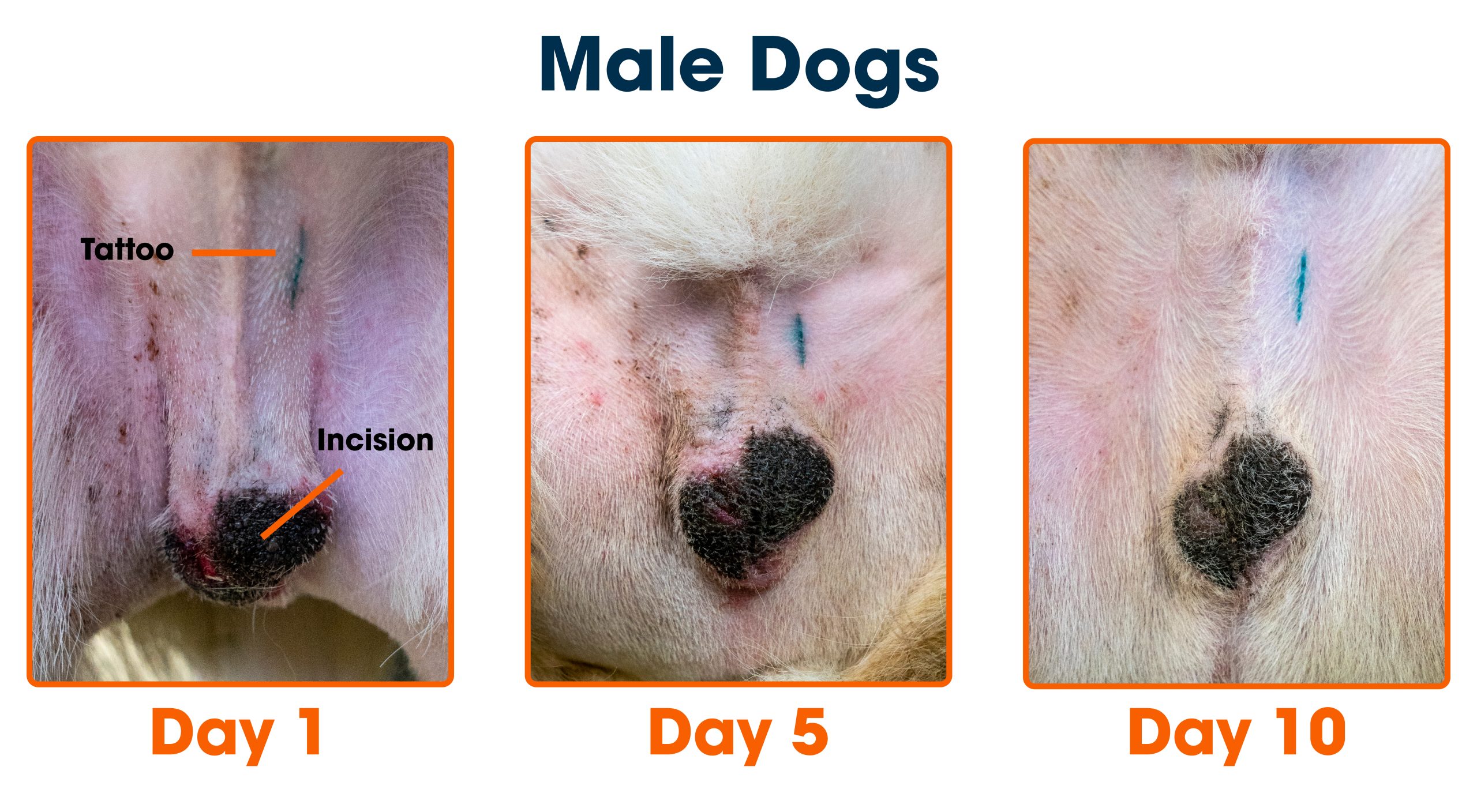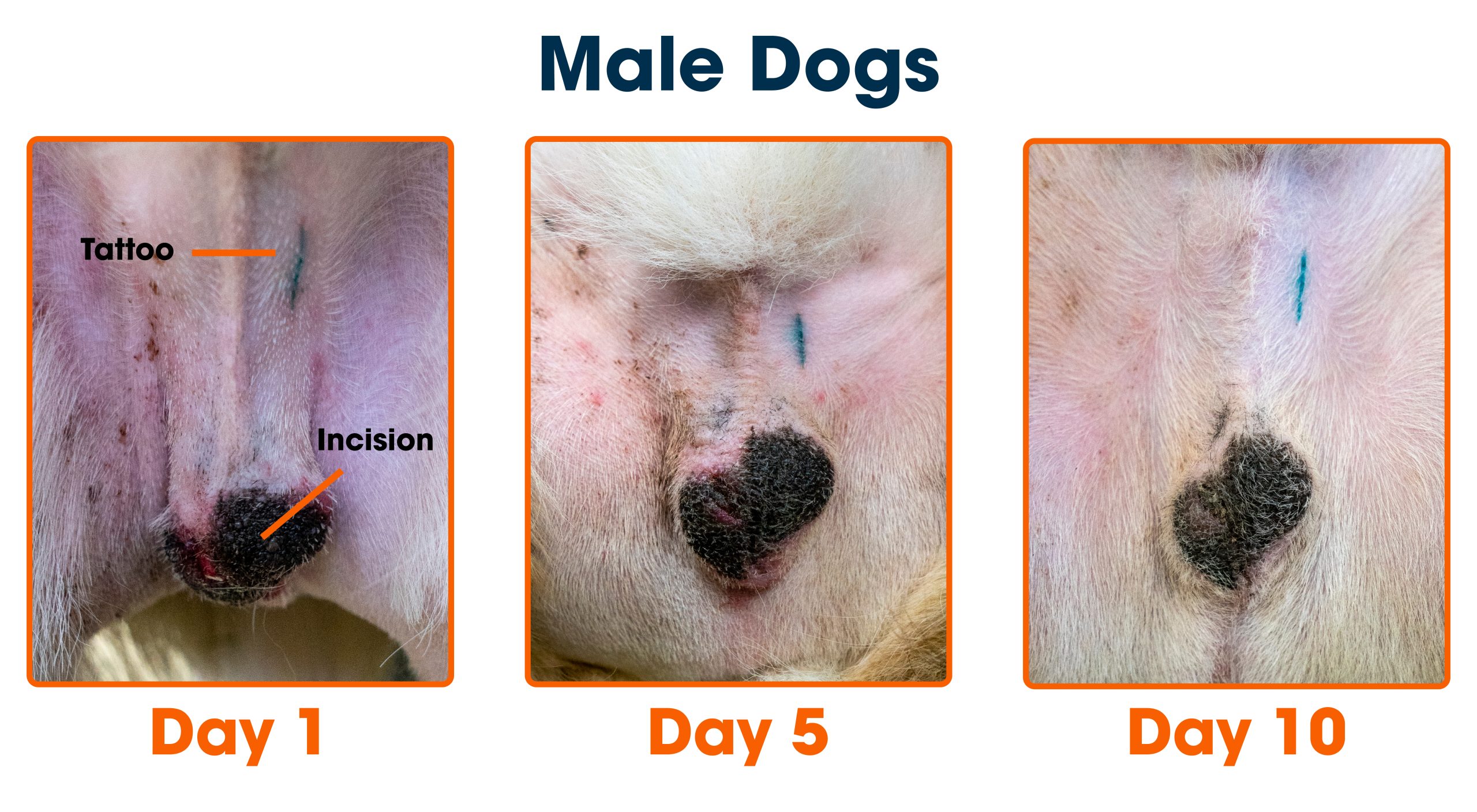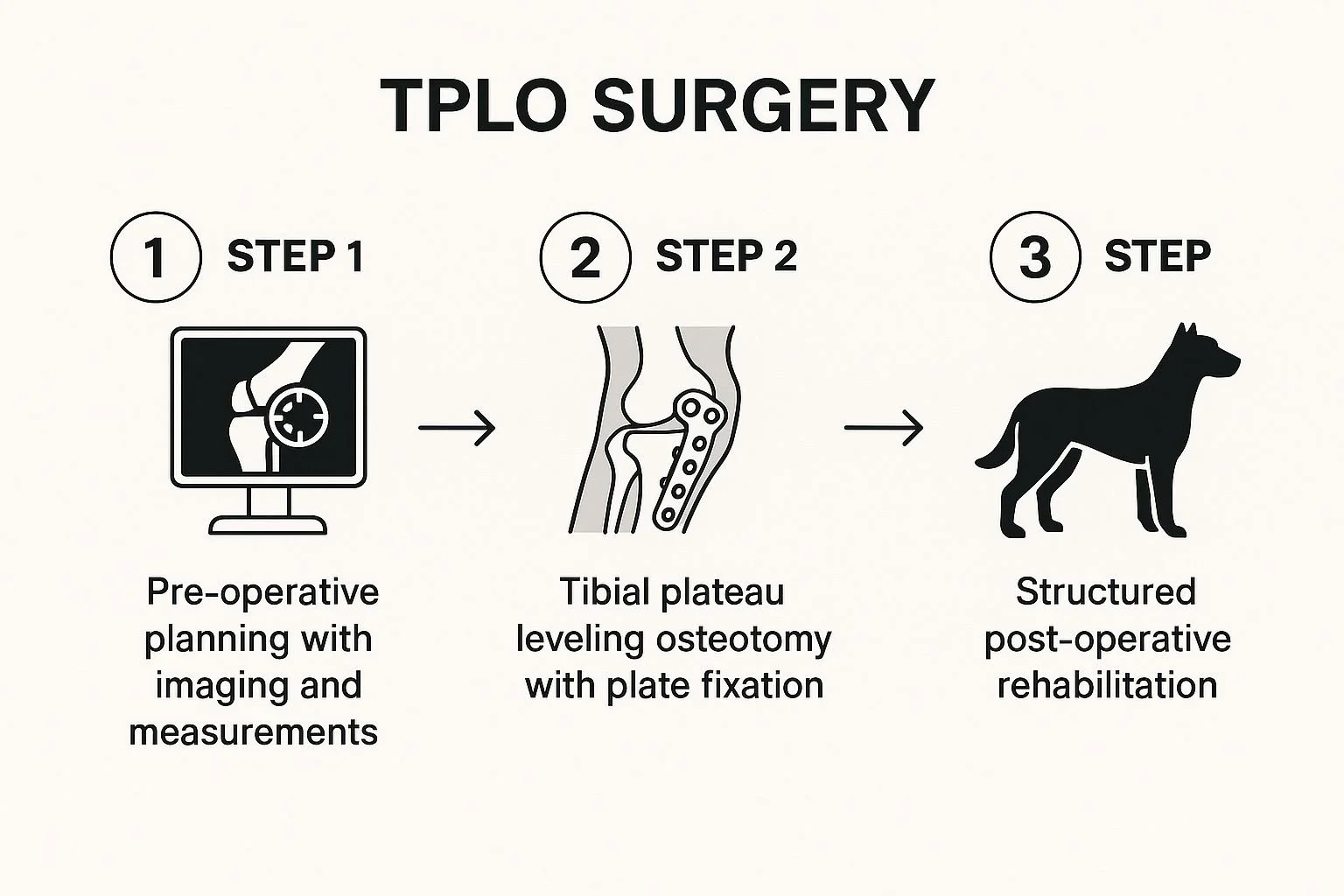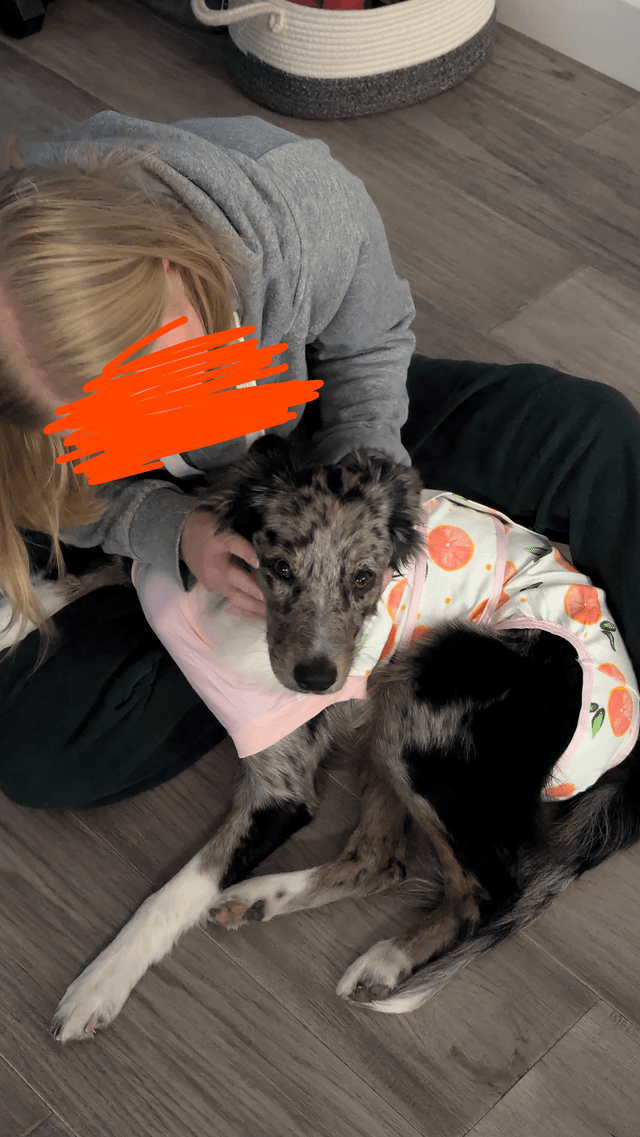If your dog is about to be spayed, you’re probably wondering one big question: how long will the recovery take? Knowing what to expect can help you prepare and make sure your furry friend heals as quickly and comfortably as possible.
You’ll discover the typical timeline for recovery, what signs to watch for, and simple tips to support your dog every step of the way. Keep reading to learn exactly what your dog needs after her spay surgery—and how you can help her bounce back fast.

Credit: www.reddit.com
Typical Recovery Duration
Spaying your dog is a common surgery. Recovery time is important for her health. Most dogs heal well with proper care.
Knowing what to expect helps you support your dog. Recovery usually takes about two weeks.
First 24 Hours Post-surgery
The first day after surgery is critical. Your dog may feel sleepy and weak. She might not want to eat or drink much.
Watch for signs of pain or swelling. Keep her calm and quiet. Avoid letting her jump or run.
- Provide a warm, quiet place to rest
- Offer small amounts of water frequently
- Limit activity to prevent injury
- Check the incision site for redness or bleeding
Days 2 To 7 Care
During this period, your dog starts to feel better. She may eat more and have more energy. Still, limit her movement to help healing.
Keep the incision clean and dry. Prevent licking or biting the area. Use an Elizabethan collar if needed.
- Check the incision daily for swelling or discharge
- Give any prescribed medicines as directed
- Avoid bathing your dog until the vet says it is okay
- Keep your dog on a leash during bathroom breaks
Healing Progress By Two Weeks
Most dogs heal well by two weeks. The incision should be closed and dry. Your dog should act more normal and playful.
If your dog is still licking or if the incision looks bad, contact your vet. Follow any final care steps your vet gives.
- Check that stitches or staples have been removed if needed
- Slowly return to normal activity after vet approval
- Continue to watch for any signs of infection
Factors Influencing Recovery Time
Recovery time for a dog spay varies. Several factors can speed up or slow down the process. Understanding these factors helps in planning for a smoother recovery.
Key factors include the dog’s age and health, the surgical technique used, and the quality of post-operative care. Each plays a crucial role in how quickly a dog bounces back.
Age And Health Of The Dog
Younger, healthier dogs tend to recover faster. Older dogs or those with health issues might take longer. Each dog’s recovery can be different based on their health status.
- Puppies often heal quicker than older dogs
- Healthy dogs generally face fewer complications
- Pre-existing conditions can slow recovery
Surgical Technique Used
The method of surgery impacts recovery time. Less invasive techniques often lead to quicker healing. Discuss options with your vet to understand the best approach for your dog.
| Technique | Recovery Speed |
| Traditional | Moderate |
| Laproscopic | Faster |
Post-operative Care Quality
Good care after surgery is vital. Proper rest, medication, and diet aid in recovery. Follow your vet’s instructions to ensure your dog heals well.
Common Post-spay Symptoms
After a dog is spayed, her body starts to heal from the surgery. This healing process shows some usual signs. Knowing these signs helps you care for your dog properly.
It is important to watch your dog closely. Some signs are normal, but others may need a vet’s help. This guide explains what to expect and when to get help.
Normal Signs To Expect
Your dog will show some common symptoms after spaying. These signs usually get better in a few days as she heals.
- Tiredness and less activity
- Loss of appetite for one or two days
- Swelling or slight redness near the incision
- Small amount of clear or slightly bloody discharge
- Mild pain or discomfort, shown by whimpering or restlessness
- Licking or gently sniffing the surgery site
These signs are normal and show your dog is healing. Keep her calm and give her a clean, quiet place to rest.
Warning Signs That Need Vet Attention
Some symptoms can mean problems after spaying. Watch for these signs and contact your vet if you see any.
| Warning Sign | Possible Cause | What to Do |
|---|---|---|
| Heavy bleeding or bright red discharge | Internal bleeding or wound opening | Call your vet immediately |
| Swelling that grows or becomes very red | Infection or inflammation | Get veterinary care soon |
| Fever over 102.5°F (39.2°C) | Infection | Visit your vet for treatment |
| Excessive licking or chewing of the incision | Wound irritation or risk of infection | Use an Elizabethan collar and consult the vet |
| Vomiting or diarrhea lasting more than one day | Reaction to surgery or medication | Seek veterinary advice |
| Extreme weakness or collapse | Serious complications | Emergency vet visit needed |

Credit: medium.com
Essential Care Tips
After a dog is spayed, proper care helps her heal well. Recovery usually takes about 10 to 14 days.
During this time, you must watch for signs of problems and follow care tips closely.
Managing Pain And Discomfort
Your dog may feel sore and tired after surgery. Pain medicine from the vet helps her feel better.
Give all medicines exactly as the vet says. Do not give human pain medicine.
- Use pain pills or liquids as prescribed
- Watch for signs of pain like whining or hiding
- Keep her in a quiet, comfortable spot
Preventing Licking And Infection
Dogs often lick their surgery site. This can cause infection or open the wound.
Use an Elizabethan collar (cone) or recovery suit to stop licking. Check the site daily for redness or swelling.
- Keep the wound clean and dry
- Do not bathe your dog until the vet says it is okay
- Call the vet if you see pus or bad smell
Exercise And Activity Restrictions
Limit your dog’s activity during recovery. Too much movement can harm the healing site.
Short leash walks and rest help avoid strain on stitches. Avoid running, jumping, or rough play.
- Keep walks short and calm
- Prevent jumping on furniture or stairs
- Provide a quiet place to rest
When To Resume Normal Activities
After a dog spay surgery, recovery time varies by dog. It is important to know when to start normal activities again. Proper timing helps avoid complications and speeds healing.
Always follow your vet’s advice. Watch your dog closely for signs of pain or swelling before resuming activities.
Returning To Walks And Play
Most dogs can start short, gentle walks within a few days after surgery. Avoid running, jumping, or rough play until the vet says it is safe. This usually takes about two weeks.
- Start with 5 to 10 minute slow walks.
- Watch for signs of discomfort or tiredness.
- Keep your dog on a leash to control activity.
- Do not allow jumping on furniture or stairs.
- Gradually increase walk time after two weeks.
Diet And Feeding Adjustments
After surgery, your dog’s appetite may change. Feeding smaller, more frequent meals can help during recovery. Keep fresh water available at all times.
| Feeding Tips | Details |
| Meal Size | Offer smaller portions 3-4 times a day |
| Food Type | Use soft, easy-to-digest food |
| Water | Keep water bowl filled and accessible |
| Monitor | Watch for vomiting or loss of appetite |
| Return to Normal | Gradually resume regular meals after 7 days |

Credit: christchurchreferral.vet
Frequently Asked Questions
How Long Does A Dog Take To Fully Recover From Spay Surgery?
Most dogs recover from spay surgery within 10 to 14 days. During this time, rest and limited activity are essential to heal properly. Your vet will provide specific care instructions to ensure a smooth recovery.
When Can My Dog Resume Normal Activities After Spaying?
Dogs usually resume normal activities about 10 to 14 days after spaying. Avoid running, jumping, and rough play until the incision heals fully. Follow your vet’s advice to prevent complications and support healing.
What Are Common Signs Of Slow Recovery After Dog Spay?
Signs of slow recovery include swelling, redness, discharge, lethargy, or loss of appetite. If you notice these symptoms, contact your vet immediately. Early intervention can prevent infections and other complications.
How Can I Help My Dog Recover Faster After Spay Surgery?
Provide a quiet, comfortable space and limit physical activity. Keep the incision clean and dry, and follow all vet instructions. Proper nutrition and pain management also support faster healing.
Conclusion
Recovery after a dog spay usually takes about two weeks. Your pet needs rest and gentle care during this time. Keep an eye on the incision to spot any problems early. Avoid letting your dog run or jump too much.
Follow the vet’s instructions closely for the best healing. Most dogs feel better quickly and return to normal activities soon. Patience and care help your dog heal safely and comfortably. Trust the process and give your dog plenty of love.







